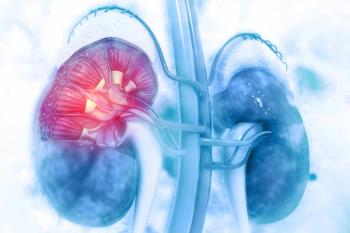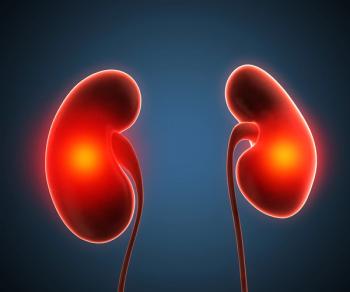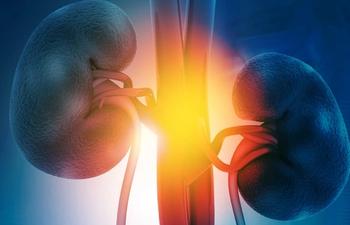
Renal Function Change Found to be a Prognostic Factor for Cancer Specific Survival in RCC
The aim of this Chinese study was to evaluate the influencing factors of perioperative renal function change and their relationship with prognosis in patients with renal cell carcinoma and tumor thrombus after nephrectomy and thrombectomy.
In a study published in BMC Cancer, researchers in China found that in patients with renal cell carcinoma (RCC), renal function change, which was associated with preoperative estimated glomerular filtration rate (eGFR) and pathological type, was a prognostic risk factor for cancer-specific survival (CSS).
The aim of the study was to validate previous conclusions, while also looking at the influencing factors of perioperative renal function change and their relationship with prognosis in patients with RCC and tumor thrombus (TT) after nephrectomy and thrombectomy.
“In RCC patients with TT, [radical nephrectomy; RN] with thrombectomy combined with metachronous adjuvant therapy seems to be the most effective methods to better prognosis,” the authors wrote. “However, this surgical method might have effect on renal function owing to the loss of renal tissue and targeted therapy also has a certain impact on serum creatinine in patients with advanced RCC.”
Researchers retrospectively analyzed the data of 135 patients with RCC and tumor thrombus who underwent nephrectomy and thrombectomy from May 2015 to July 2018. Of this cohort, 101 (74.8%) were male and 34 (25.2%) were female. The mean preoperative eGFR was 73.9 ± 21.8 mL/(min × 1.73 m2) and postoperative eGFR was 69.5 ± 25.2 mL/(min × 1.73 m2).
Using multivariate linear regression analysis, preoperative eGFR (P < 0.001) and pathological type (P = 0.038) were significant predictive factors of absolute change (ACE). In regard to percent change (PCE), preoperative eGFR (P < 0.001) and pathological type (P = 0.002) were significant predictors. Additionally, using multivariate logistic regression analysis, preoperative eGFR (P = 0.016) was the only risk factor for predicting worse postoperative renal function.
During follow-up, researchers found that 22 patients (16.3%) had died due to RCC. According to ROC analysis, the cut-off values for ACE and PCE were 13.9 and 0.16, respectively. An ACE < 13.9 and a PCE > 0.16 indicated worse CSS (P = 0.006 and P = 0.047, respectively). Using a multivariate Cox regression analysis of several related factors, perinephric tissues invasion (P = 0.001), sarcomatoid differentiation (P = 0.001), and ACE> 13.9 (P = 0.002) were found to be significant prognostic factors for CSS. However, a PCE > 0.16 was not suggested to be (P = 0.055).
Researchers indicated that in their single-institution experience, the cause of renal insufficiency after RN with thrombectomy consists of at least 2 aspects. The first is renal ischemia due to uninjured renal vein occlusion during operation. The second may be caused by insufficient circulation volume due to a significant amount of bleeding during operation.
Moreover, it was suggested that the urine color and volume be closely monitored during operation. Additionally, several serum markers, such as serum creatinine, urea, and electrolyte levels, should also be observed. For those with oliguria, increased serum creatinine, or urea, it was recommended for physicians to supply blood volume and perform diuretic therapy in time, making blood dialysis therapy as well if deemed necessary.
“The renal function is truly influenced by many factors. Our article only lists some of them, which is not comprehensive enough,” the authors wrote. “However, there seems to be less studies about renal function changes in TT patients in our knowledge and our study has obtained some conclusion for foundation of further research.”
The researchers went on to indicate that future research requires a larger cohort performed at multiple centers, as well as prospective studies. “We expect a new more complex index including all prognostic predictors in assessing the change of perioperative renal function of patients following RN with thrombectomy in the future.”
Reference:
Liu Z, Tang S, Tian X, et al. The effect of renal function change on renal cell carcinoma patients with tumor thrombus after nephrectomy and thrombectomy: a large Chinese center experience. BMC Cancer. doi:10.1186/s12885-020-6563-7.
Newsletter
Stay up to date on recent advances in the multidisciplinary approach to cancer.
































































































